Author: Kymberlie Krieger
See how leaders in the mortgage industry are using cutting-edge technologies to improve the overall lending experience.
It’s no secret that mortgages have been going digital for years, and the COVID-19 pandemic only paved the way for customer expectations to match the industry trends.
Digitization has been improving customer experiences, reducing overhead costs, decreasing time from origination to close, and forging a new road ahead for companies into the modern age.
BeSmartee examines how leaders in the mortgage industry are leveraging new technologies to prioritize creativity and Iautomation to enhance their mortgages.
The Digital Age is Here
After interviewing nearly 400 banking and lending institutions, Forbes found that 82% of respondents are putting digitization of their processes first.
Regardless of bank size, whether the lending institutions were banks at all, or the number of customers they served, most people agreed that digitization was a significant priority. They aren’t just implementing digitization in customer-facing setups, either. The revolution extends to the back office too.
Forbes’ self-identifying questionnaire found that over 70% of large banks, lenders and regionals were leaders in digitization or quickly jumping on the bandwagon.
Comparatively, in small banks and lenders, only 16% were identified as leaders in the digital revolution with just under 50% lagging behind or refusing to implement the new technologies and change the ways they do business.
Much of this difference can be attributed to available capital. After all, acquiring the tools for digitization isn’t cheap, and there’s usually a learning curve involved as customers and loan officers learn to maneuver the new technologies. Some of it can also be attributed to who answered the questions since CEOs are much more likely to call their techniques industry-leading than other positions.
The Benefits
There are plenty of benefits to the digital revolution happening in the mortgage industry.
Automation: Automation ensures better compliance and reduces the likelihood of human error when inputting data. Origination costs are also significantly lowered with digitized mortgages. Closing times are shortened by weeks when employees don’t need to manually input everything and cross-reference information themselves.
Tools: Advanced analytical tools also give management the capability to make data-driven decisions regarding their company like how well their advertisements are performing, where their target audience is and who the reliable borrowers are.
Customers also find that having digital tools at their disposal, such as online calculators, in-app messaging and the ability to upload and sign documents from the comforts of their homes are a vast improvement to traditional mortgages.
These tools provide more than just loans; they can also integrate with bundles or packages including other valuable services that customers appreciate and help your business stand out from the crowd. This way, instead of dealing with multiple transactions, everything is much more streamlined from the customer’s point of view.
Transparency: Another benefit for the customer comes in the form of transparency. Digitization is working to reduce the entire time from application to closing, but between new laws and complex arrangements like building a new house, there will always be reasons why the process may take a few weeks or months.
During that time, customers are far less likely to become frustrated and upset if they can clearly monitor the progress of their application and understand exactly what is happening to cause the delays.
Gig Economy
One of the benefits of digitization is the expanding offerings for workers who rely on gigs. Traditional mortgage processes often exclude these people for not proving steady income in their loan applications.
During the COVID-19 pandemic, plenty of people were either laid off or switched their employment to gig work. Under normal circumstances, that would have disqualified them from obtaining approval for loans, but digital mortgages have allowed for them to participate in the loan market.
Considering that the gig economy seems to be the wave of the future, it is prudent for the mortgage industry to adapt to changing trends and allow these people the same benefits as those with full time outside employment.
Gig worker mortgages are often more complicated than traditional mortgages, but considering how many of them are millennials who have entered into the home-buying market, it would be a disadvantage for everyone if lending companies didn’t account for them.
Areas of Digitization
Currently, marketing is the area which has seen the most digitizing so far. 45% of the respondents to Forbes’ survey indicated that their marketing was already fully digital at the time of the survey.
Compared with underwriting and title issues at under 30% fully digitized, it’s easy to see where the focus will be in the upcoming years.









